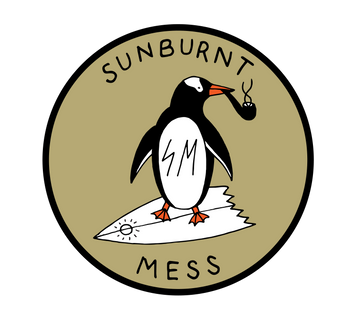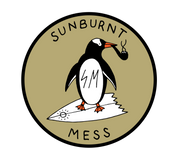18 Mar, 2025
·
Design Theory: Single Fin Placement & Tuning for Different Wave Conditions
18 Mar, 2025
·
Single Fin Placement & Tuning for Different Wave Conditions
The placement and tuning of a single fin significantly impact pivot, drive, stability, and maneuverability. Below is a breakdown of how fin position, size, and angle (cant/rake) affect performance in different conditions.
1. Key Factors in Single Fin Placement
A. Forward vs. Backward Placement
-
Fin forward (closer to the midpoint) → More maneuverability
- Looser feel, quicker rail transitions, easier turns.
- Best for smaller, slower, mushy waves.
- Works well for logs, mid-lengths, and alternative shapes.
-
Fin backward (closer to the tail) → More hold and drive
- More control in powerful waves, better for drawn-out turns.
- Increased stability in big waves, barrels, and fast point breaks.
- Ideal for guns, performance single fins, and noseriders.
B. Depth & Base Width
-
Deeper fin (7"–10") → More hold and control
- Ideal for bigger waves, powerful surf.
- Prevents sliding out during hard bottom turns.
-
Shallower fin (6"–7.5") → More looseness and maneuverability
- Good for softer, slower waves where quick adjustments are needed.
- Works well on shorter single-fin boards (under 7’6").
C. Rake (Sweep Angle)
-
More rake (angled back fin) → Longer, more drawn-out turns
- Holds better in hollow waves and barrels.
- Ideal for powerful reef breaks and bigger surf.
-
Less rake (upright fin) → Tighter, more pivot-based turns
- Best for small, punchy waves.
- Allows quick direction changes and easier noseriding.
2. Recommended Fin Setups for Different Wave Conditions
| Wave Type | Fin Placement | Fin Size | Rake | Best Board Type |
|---|---|---|---|---|
| Small, Mushy Waves (1–3 ft) | Forward | 8.5”–10” | Moderate Rake | Logs, Mid-lengths |
| Shoulder-High, Clean Waves (3–5 ft) | Middle | 7”–8.5” | Moderate Rake | Classic Single Fin, Egg |
| Hollow, Fast Waves (5–8 ft) | Backward | 7.5”–9” | Moderate Rake | Pintail Single Fin |
| Big Waves & Step-Up Boards (8–12 ft) | Backward | 7.5”–8.5” | Low Rake | Gun, Step-Up |
3. Fine-Tuning Your Single Fin
Once you have a base setup, small adjustments can dramatically change how the board feels.
A. Adjusting for More Pivot & Maneuverability
- Move the fin slightly forward (¼ to ½ inch).
- Use a shallower fin with less rake.
- Works best in small waves or for tighter turns.
B. Adjusting for More Drive & Stability
- Move the fin backward for better hold.
- Increase fin depth (9”–10” for logs, guns).
- Use a higher rake fin for smoother, drawn-out turns.
- Best for big surf, steep waves, or heavy carving.
C. Adjusting for Noseriding
- Move the fin back slightly to improve hold.
- Use a wider base for extra stability.
- Ideal for longboards and classic logs.
4. Fin Placement Guide for Popular Single Fin Boards
A. Classic Log (9’0”–10’0”)
- Fin size: 9”–10”
- Placement: 1”–2” from the tail for max hold (good for noseriding).
- Fin shape: Upright pivot fin (more stability when cross-stepping).
B. Mid-Length (6’8”–8’0”)
- Fin size: 7”–8.5”
- Placement: Mid-box (balancing maneuverability and drive).
- Fin shape: Swept-back fin for smoother carves.
C. Performance Single Fin (6’0”–7’0”)
- Fin size: 6.5”–7.5”
- Placement: 1”–2” forward for tighter turns.
- Fin shape: Narrow base, medium rake for speed and pivot.
D. Step-Up Gun (7’6”–10’0”)
- Fin size: 7.5”–9”
- Placement: As far back as possible for hold in steep drops.
- Fin shape: low to moderate-rake gun fin for control in heavy waves.
Final Thoughts: How to Test Your Setup
- Start with a neutral fin position (center of the box).
- Make small ¼-inch adjustments to feel differences.
- Experiment with different rake angles based on your wave type.
- Record how each change affects performance to fine-tune your ideal setup.


